Opinion & Analysis
The Facts About Single Length Irons
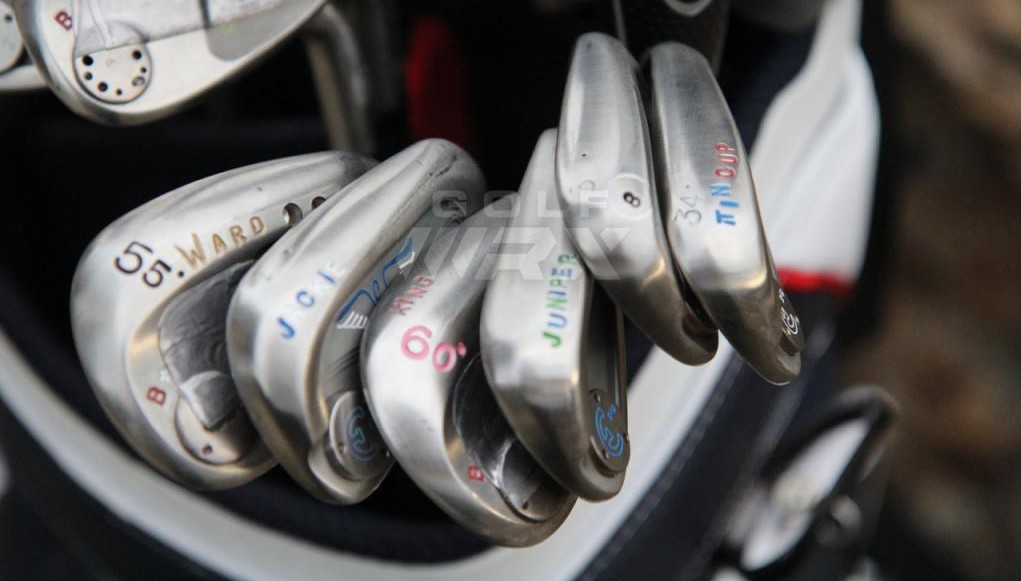
There has been a LOT of discussion lately about single-length iron sets. So much, in fact, that as a club builder and fitter single-length irons have become a daily topic of conversation.
Most of this buzz about single-length irons has been created by reigning U.S Amateur and NCAA Division I Individual champion Bryson DeChambeau, who has been very successful using a custom set of single-length irons made by Edel, a boutique equipment company in Texas.
Related: Bryson DeChambeau WITB 2016
Edel isn’t the first company to build a set of single-length irons. Tommy Armour built and marketed a set called the EQL’s in the 80’s, and there have been a few other niche companies who have been building these sets for a long time, including One Iron Golf. Recently, Tom Wishon and Jaacob Bowden released a set of single-length irons. Named Sterling Irons, they’re designed to be built shorter than others. At 36.5 inches, they’re each about the length of an 8-iron.
Related: Learn more about Sterling Irons
All of the sets listed above have one thing in common; they were designed with the sole purpose of being built to a single length. With this trend gaining more interest from the general golfing public the most popular questions are:
- Can single length irons work for me?
- Can I make my current set into a single-length set?
I’m going to explain the differences between a standard set of irons and single-length irons, why it’s difficult to convert a standard set of irons to single length and what is needed to make sure proper gapping is achieved throughout the set.
According to DeChambeau and the team at Edel, his set took many attempts to get just right. And as a club builder who is getting requests for this type of set, it’s difficult to explain the small nuances involved to golfers, especially those players looking to do this to either an existing set or to a new one built from scratch using standard OEM components. It’s also difficult to fit a golfer for this type of set because of the cost associated with having enough club heads of varying lofts to properly fit for distance gapping.
The other piece of information that I don’t believe has been mentioned enough as it pertains to the average golfer is that DeChambeau is a finely tuned athlete who swings his 45-inch driver at more than 120 mph. Most club players can only swing that fast in their dreams, and DeChambeau’s speed gives him a distinct advantage with his irons.
If you give a golfer five clubs of the same length, shaft flex, total weight, and swing weight, they will swing them at almost exactly the same speed. Give that golfer a traditional set of irons that are built with shafts that get approximately 0.5-inches longer as the iron number decreases (with the same shaft, shaft flex, swing weight and a decreasing head weight of 7-to-10 grams per club), however, and they will likely swing each club 2-3 mph faster as they move up the set.
The increased clubhead speed translates into faster ball speeds in the longer irons, which is needed to maintain a consistent peak height from the lower-lofted clubs, also know as a consistent flight window. Smash Factor also slowly increases, because the reduced loft will transfer more energy into the ball (the contact is less “glancing” or oblique), creating faster ball speeds with the longer clubs.
Distance gapping can become an issue in the longer clubs with a single-length iron set, because swing speed does not stay the same as loft is reduced. That’s why DeChambeau’s custom Edel set uses bigger loft gaps (5 degrees) in the longer clubs. Wishon’s Sterling irons do not have this design, but he addressed the issue by making the faces of his long irons “hotter,” which has the same effect.
Here is where things become very difficult from a building perspective. Standard head weights for irons are not designed to be built to the same length. They are engineered for a company’s specific length progression, generally 0.5 inches between clubs.
The chart below demonstrates the difference in club head mass between standard head weights of a set built to roughly D3 and a set of single-length irons.
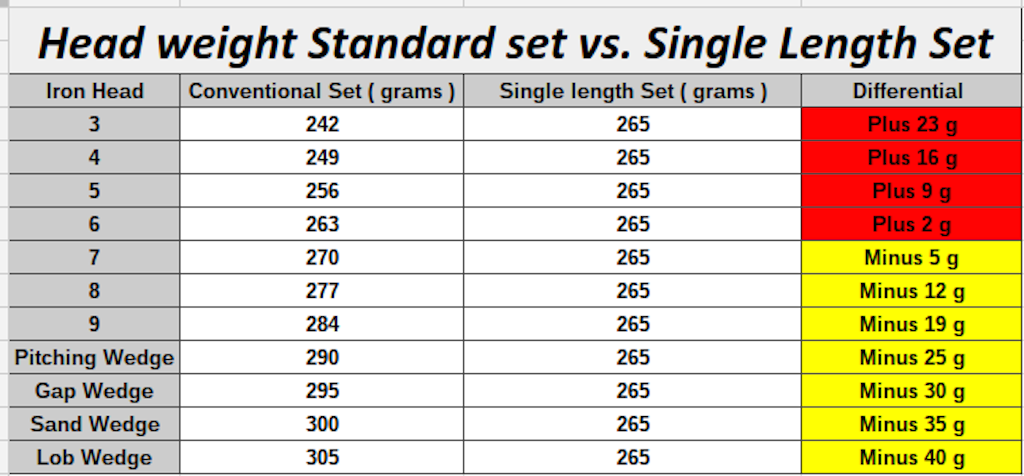 Also, the lies and loft of standard irons are not designed to be bent past a certain point, which can cause detriment to the playing characteristics of the club head.
Also, the lies and loft of standard irons are not designed to be bent past a certain point, which can cause detriment to the playing characteristics of the club head.
DeChambeau plays his entire set at 73-degree lie angle, which is more upright than the lie angle of most off-the-rack putters! Trying to bend a set of standard iron heads to these angles would either totally mar the hosels or cause them to break, especially considering many irons now are made of multiple materials and advanced constructions. DeChambeau’s Edel irons, on the other hand, are forged and more easily bent.
It should also be noted that DeChambeau’s irons are manufactured so there is no negative effect on performance. And his extremely upright lie angles are the result of his unique swing mechanics, and are not necessary to use a single-length iron set.
The chart below demonstrates standard lie angles vs. DeChambeau’s Clubs.
Going back to the issue of gapping, with a set of single-length clubs, lofts need to be adjusted accordingly to make sure that golfers have proper yardage gaps between clubs. With any player, the gapping will depending on swing speed.
The Trackman data below shows some interesting information based my testing a set of single-length irons (37.5 inches) and a set of irons built to standard lengths with frequency matched shafts, matching swing weights, and built in 0.5-inch increments.
The conclusion is that single-length irons might be the perfect solution to creating more consistency in your golf game, but just like buying a new driver or standard set of irons, be sure to visit a proper club fitter. It will take some time to find the right components to fit your needs.
- LIKE282
- LEGIT55
- WOW17
- LOL8
- IDHT10
- FLOP5
- OB5
- SHANK18
Opinion & Analysis
Myrtle Beach, Explored: February in South Carolina

As I gain in experience and age, and familiarity breeds neither contempt nor disdain, I understand why people return to a place. A destination like Myrtle Beach offers a sizable supply and diversity of restaurants, entertainment venues, and shops that are predicated on the tenets of the service industry. Greet your customers with a smile and a kind word, and they will find comfort and assurance. Provide them with a memorable experience and they will suggest your place of business to others.
My first tour of Myrtle Beach took place in the mid-1980s, and consisted of one course: Gator Hole. I don’t remember much from that day, and since Gator Hole closed a decade later, I cannot revisit it to recollect what I’d lost. Since then, I’ve come to the Grand Strand a few times, and been fortunate to never place a course more than once. I’ve seen the Strantz courses to the south and dipped my toe in the North Carolina courses of Calabash. I’ve been to many in the middle, including Dunes, Pine Lakes, Grande Dunes among them.
2024 brought a quartet of new courses, including two at the Barefoot Resort. I’d heard about the North Myrtle Beach four-pack of courses that highlight the Barefoot property, including layouts from Pete Dye, Tom Fazio, Davis Love III, and Greg Norman. I had the opportunity to play and shoot the Dye and Fazio tracks, which means that I’ll have to return to see the other two. Sandwiched between them were the TPC-Myrtle Beach course, also from Tom Fazio, and the Pawley’s Plantation trace, by the hand of Jack Nicklaus. I anticipated a bit of the heroic, and bit of the strategic, and plenty of eye candy. None of those architects would ever be considered a minimalist, so there would be plenty of in-play and out-of-play bunkers and mounds to tantalize the senses.
My nephew arrived a few days early, to screen a few more courses. As a result, you the reader will have an extra quarter of mini-reviews, bringing the total of courses in this piece to eight. It was inconceivable that CJR would play four courses that I had never played nor photographed, but that was the case. His words appear at the end of this piece. We hope that you enjoy the tour.
Main Feature: Two Barefoots, a TPC, and Pawley’s Plantation
What Paul “Pete” Dye brought back from his trips to the United Kingdom, hearkened back to what C.B. MacDonal did, some 65 years prior. There is a way of finding bunkers and fairways, and even green sites, that does not require major industrial work. The Dye course at Barefoot Resorts takes you on a journey over the rumpled terrain of distant places. If there’s one element missing, it’s the creased and turbulent fairways, so often found in England and Ireland. The one tenet of playing a Dye course, is to always aim away from temptation, from where your eyes draw you. Find the safe side of the target, and you’ll probably find your ball. It then stands that you will have a shot for your next attempt. Cut the corner, and you might have need to reload. The Barefoot course begins gently, in terms of distance, but challenges with visual deception. After two brief 4s and a 3, the real work begins. The course is exposed enough, to allow the coastal winds to dance along the fairways. Be ready to keep the ball low and take an extra club or two.
If memory serves, TPCMB is my first trek around a TPC-branded course. It had all the trappings of a tour course, from the welcome, through the clubhouse, to the practice facilities and, of course, the course. TPC-Myrtle Beach is a Tom Fazio design, and if you never visit Augusta National, you’ll now have an idea of what it is like. You play Augusta’s 16th hole twice at TPCMB, and you enjoy it both times. Fazio really likes the pond-left, green-angle-around par three hole, and his two iterations of it are memorable.
You’ll also see those Augusta bunkers, the ones with the manicured edges that drop into a modestly-circular form. What distinguishes these sand pits is the manner in which they rise from the surrounding ground. They are unique in that they don’t resemble the geometric bunkering of a Seth Raynor, nor the organic pits found in origin courses. They are built, make no mistake, and recovery from them is manageable for all levels of bunker wizardry.
If you have the opportunity to play the two Tom Fazio courses back to back, you’ll notice a marked difference in styling. Let me digress for a moment, then circle back with an explanation. It was written that the NLE World Woods course designed by Fazio, Pine Barrens, was an homage to Pine Valley, the legendary, New Jersey club where Fazio is both a member and the architect on retainer. The Pine Barrens course was plowed under in 2022, so the homage no longer exists. At least, I didn’t think that it existed, until I played his Barefoot Resort course in North Myrtle Beach.
Pine Valley might be described as an aesthetic of scrub and sand. There are mighty, forced carries to travers, along with sempiternal, sandy lairs to avoid. Barefoot Fazio is quite similar. If you’re not faced with a forced carry, you’ll certainly contend with a fairway border or greenside necklace of sand. When you reach the 13th tee, you’ll face a drive into a fairway, and you might see a distant green, with a notable absence: flagstick. The 13th is the icing on the homage cake, a callout of the 8th hole at Pine Valley. Numero Ocho at the OG has two greens, side by side, and they change the manner in which the hole plays (so they say.) At Barefoot Fazio, the right-side green is a traditional approach, with an unimpeded run of fairway to putting surface. The left-side green (the one that I was fortunate to play) demands a pitch shot over a wasteland. It’s a fitting tribute for the rest of us to play.
Be certain to parrot the starter, Leon’s, advice, and play up a deck of tees. Barefoot Fazio offers five par-three holes, so the fours and fives play that much longer. Remember, too, that you are on vacation. Why not treat yourself to some birdie looks?
The Jack Nicklaus course at Pawley’s Plantation emerged from a period of hibernation in 2024. The greens were torn up and their original contours were restored. Work was overseen by Troy Vincent, a member of the Nicklaus Architecture team. In addition, the putting corridors were reseeded with a hardier, dwarf bermuda that has experienced great success, all along the Grand Strand that is Myrtle Beach.
My visit allowed me to see the inward half first, and I understand why the resort wishes to conclude your day on those holes. The front nine of Pawley’s Plantation works its way through familiar, low country trees and wetlands. The back nine begins in similar fashion, then makes its way east, toward the marsh that separates mainland from Pawley’s Island. Recalling the powerful sun of that Wednesday morning, any round beginning on the second nine would face collateral damage from the warming star. Much better to hit holes 11 to close when the sun is higher in the sky.
The marshland holes (12 through 17) are spectacular in their raw, unprotected nature. The winds off the Atlantic are unrelenting and unforgiving, and the twin, par-three holes will remain in your memory banks for time’s march. In typical Golden Bear fashion, a majority of his putting targets are smallish in nature, reflecting his appreciation for accurate approach shots. Be sure to find the forgiving side of each green, and err to that portion. You’ll be grateful.
Bonus Coverage: Myrtlewood, Beechwood, Arrowhead, and King’s North
Arrowhead (Raymond Floyd and Tom Jackson)
A course built in the middle of a community, water threatens on most every hole. The Cypress 9 provides a few holes forcing a carried drive then challenge you with water surrounding the green. On Waterway, a drivable 2nd hole will tempt most, so make sure the group ahead has cleared the green.
Myrtlewood (Edmund Alt and Arthur Hills) and Beechwood (Gene Hamm)
A middle of the winter New Englander’s paradise. Wide open fairways, zero blind shots and light rough allow for shaking off the rust and plenty of forgiveness. A plethora of dog legs cause one to be cautious with every tee shot. Won’t break the bank nor the scorecard.
King’s North @ Myrtle Beach National (Arnold Palmer)
- LIKE2
- LEGIT0
- WOW0
- LOL0
- IDHT0
- FLOP1
- OB0
- SHANK1
19th Hole
Vincenzi’s 2024 Players Championship betting preview: Pete Dye specialists ready to pass tough TPC Sawgrass test
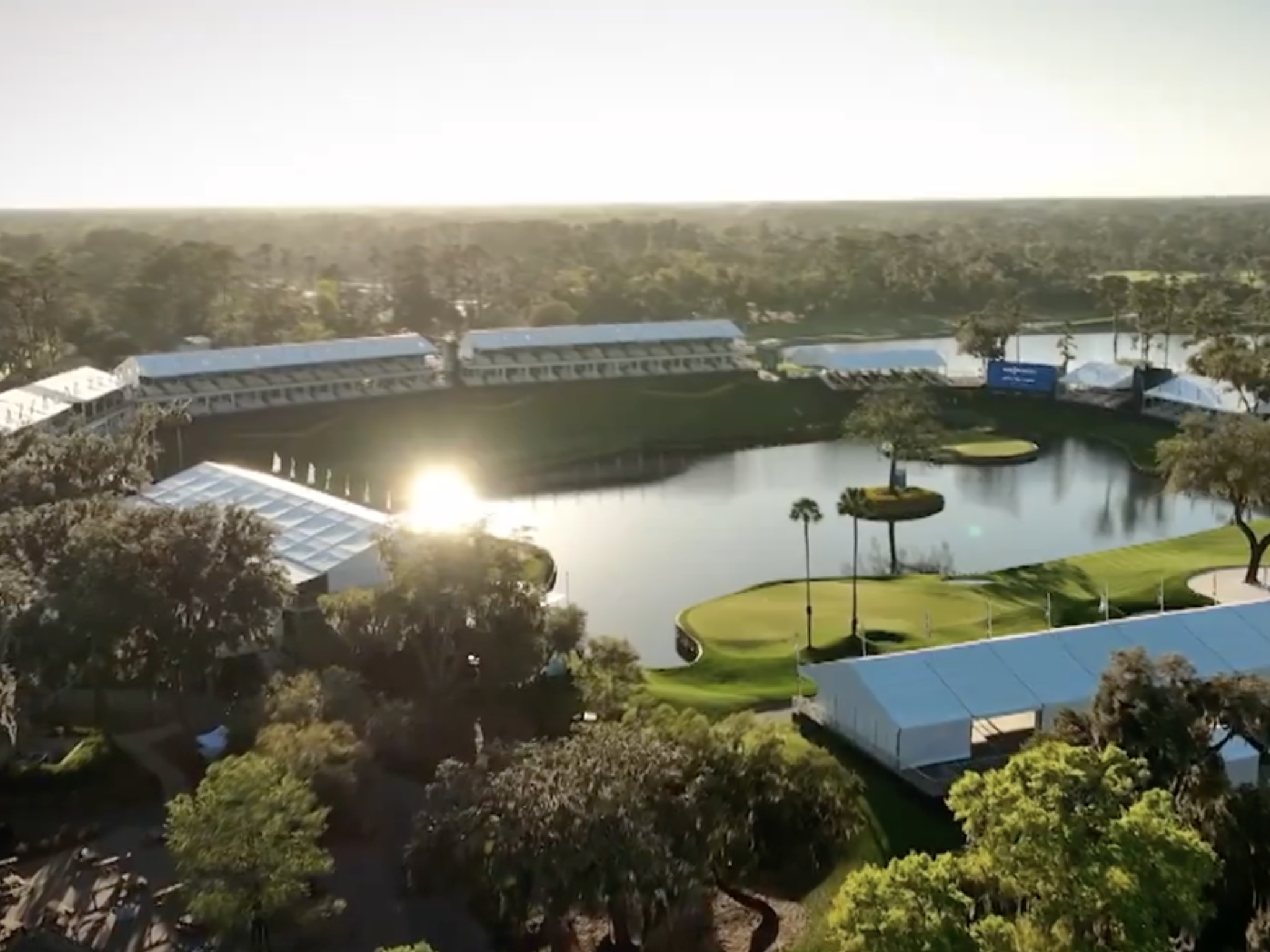
The PGA Tour heads to TPC Sawgrass to play in one of the most prestigious and important events of the season: THE PLAYERS Championship. Often referred to as the fifth major, the importance of a PLAYERS victory to the legacy of a golfer can’t be overlooked.
TPC Sawgrass is a par-72 measuring 7,245 yards and featuring Bermudagrass greens. Golfers must be patient in attacking this Pete Dye course.
With trouble lurking at every turn, the strokes can add up quickly. With a par-5 16th that is a true risk-reward hole and the famous par-3 17th island green, the only safe bet at TPC Sawgrass is a bet on an exciting finish.
THE PLAYERS Championship field is often referred to as the strongest field of the year — and with good reason. There are 144 in the field, including 43 of the world’s top 50 players in the OWGR. Tiger Woods will not be playing in the event.
THE PLAYERS is an exceptionally volatile event that has never seen a back-to-back winner.
Past Winners at TPC Sawgrass
- 2023: Scottie Scheffler (-17)
- 2022: Cameron Smith (-13)
- 2021: Justin Thomas (-14)
- 2019: Rory McIlroy (-16)
- 2018: Webb Simpson (-18)
- 2017: Si-Woo Kim (-10)
- 2016: Jason Day (-15)
- 2015: Rickie Fowler (-12)In this article and going forward, I’ll be using the Rabbit Hole by Betsperts Golf data engine to develop my custom model. If you want to build your own model or check out all of the detailed stats, you can sign up using promo code: MATTVIN for 25% off any subscription package (yearly is best value).
5 Key Stats for TPC Sawgrass
Let’s take a look at five metrics key for TPC Sawgrass to determine which golfers boast top marks in each category over their last 24 rounds.
1. Strokes Gained: Approach
Strokes Gained: Approach has historically been far and away the most important and predictive stat at THE PLAYERS Championship. With water everywhere, golfers can’t afford to be wild with their iron shots. Not only is it essential to avoid the water, but it will also be as important to go after pins and make birdies because scores can get relatively low.
Total SG: Approach Over Past 24 Rounds
- Tom Hoge (+1.37)
- Scottie Scheffler (+1.20)
- Tony Finau (+0.99)
- Jake Knapp (+0.83)
- Shane Lowry (+0.80)
2. Total Driving
This statistic is perfect for TPC Sawgrass. Historically, driving distance hasn’t been a major factor, but since the date switch to March, it’s a bit more significant. During this time of year, the ball won’t carry quite as far, and the runout is also shorter.
Driving accuracy is also crucial due to all of the trouble golfers can get into off of the tee. Therefore, players who are gaining on the field with Total Driving will put themselves in an ideal spot this week.
Total Driving Over Past 24 Rounds
- Rory McIlroy (22)
- Akshay Bhatia (25)
- Keith Mitchell (25)
- Adam Hadwin (34)
- Sam Burns (+39)
3. Strokes Gained: Total at Pete Dye Designs
TPC Sawgrass may be Pete Dye’s most famous design, and for good reason. The course features Dye’s typical shaved runoff areas and tricky green complexes. Pete Dye specialists love TPC Sawgrass and should have a major advantage this week.
SG: Total (Pete Dye) per round over past 36 rounds:
- Patrick Cantlay (+2.02)
- Scottie Scheffler (+1.90)
- Min Woo Lee (+1.77)
- Sungjae Im (+1.72)
- Brian Harman (+1.62)
4. Strokes Gained: Ball Striking
Prototypical ball-strikers have dominated TPC Sawgrass. With past winners like Sergio Garcia, Henrik Stenson, Webb Simpson, Rory McIlroy and Justin Thomas, it’s evident that golfers must be striking it pure to contend at THE PLAYERS.
SG: Ball Striking Over Past 24 Rounds
- Scottie Scheffler (+2.02)
- Tony Finau (+1.51)
- Tom Hoge (+1.48)
- Keith Mitchell (+1.38)
- Will Zalatoris (+1.18)
5. Par 5 Average
Par-5 average is extremely important at TPC Sawgrass. With all four of the Par-5s under 575 yards, and three of them under 540 yards, a good amount of the scoring needs to come from these holes collectively.
Par 5 Average Over Past 24 Rounds
- Scottie Schefler (+4.31)
- Erik Van Rooyen (+4.35)
- Doug Ghim (+4.34)
- Wyndham Clark (+4.34)
- Matt Fitzpatrick (+4.31)
6. Strokes Gained: Florida
We’ve used this statistic over the past few weeks, and I’d like to incorporate some players who do well in Florida into this week’s model as well.
Strokes Gained: Florida over past 30 rounds:
- Scottie Schefler (+2.43)
- Erik Van Rooyen (+1.78)
- Doug Ghim (+1.78)
- Wyndham Clark (+1.73)
- Matt Fitzpatrick (+1.69)
7. Strokes Gained: Total on Courses with High Water Danger
With water everywhere at TPC Sawgrass, the blow-up potential is high. It can’t hurt to factor in some players who’ve avoided the “eject” button most often in the past.
Strokes Gained: Total on Courses with High Water Danger over past 30 rounds:
- Scottie Schefler (+2.08)
- Rory McIlroy (+1.82)
- Tony Finau (+1.62)
- Patrick Cantlay (+1.51)
- Will Zalatoris (+1.49)
THE PLAYERS Championship Model Rankings
Below, I’ve compiled overall model rankings using a combination of the five key statistical categories previously discussed — SG: Approach (25%), Total Driving (20%), SG: Total Pete Dye (14%), SG: Ball-striking (15%) SG: Par 5 (8%), SG: Florida (10%) and SG: High Water (8%).
- Scottie Scheffler
- Shane Lowry
- Tony Finau
- Corey Conners
- Keith Mitchell
- Justin Thomas
- Will Zalatoris
- Xander Schauffele
- Cameron Young
- Doug Ghim
- Sam Burns
- Chris Kirk
- Collin Morikawa
- Si Woo Kim
- Wyndham Clark
2024 THE PLAYERS Championship Picks
(All odds at the time of writing)
Patrick Cantlay +2500 (DraftKings):
Patrick Cantlay is winless since the 2022 BMW Championship but is undoubtedly one of the most talented players on the PGA Tour. Since the win at Wilmington Country Club, the 31-year-old has twelve top-10 finishes on Tour and is starting to round into form for the 2024 season.
Cantlay has done well in the most recent “signature” events this season, finishing 4th at Riviera for the Genesis Invitational and 12th at Bay Hill for the Arnold Palmer Invitational. The former Tour Championship winner resides in Jupiter, Florida and has played some good golf in the state, including finishing in a tie for 4th at the 2023 Arnold Palmer Invitational. His history at TPC Sawgrass has been up and down, but his best career start at The PLAYERS came last year when he finished in a tie for 19th.
Cantlay absolutely loves Pete Dye designed courses and ranks 1st in the field in Strokes Gained: Total on Dye tracks in his past 36 rounds. In recent years, he’s been excellent at both the RBC Heritage and the Travelers Championship. TPC Sawgrass is a place where players will have to be dialed in with their irons and distance off the tee won’t be quite as important. In his past 24, rounds, Cantlay ranks in the field in Strokes Gained: Approach.
Despite being winless in recent years, I still believe Cantlay is capable of winning big tournaments. As one of the only United States players to bring their best game to Marco Simone for the Ryder Cup, I have conviction that the former top amateur in the world can deliver when stakes are high.
Will Zalatoris +3000 (FanDuel):
In order to win at TPC Sawgrass, players will need to be in total control of their golf ball. At the moment, Will Zalatoris is hitting it as well as almost anyone and finally has the putter cooperating with his new switch to the broomstick style.
Zalatoris is coming off back-to-back starts where he absolutely striped the ball. He finished 2nd at the Genesis Invitational and 4th at the Arnold Palmer Invitational where his statistics were eye opening. For the week at Bay Hill, Zal gained 5.0 strokes on approach and 5.44 strokes off the tee.
Throughout the early part of his career, Zalatoris has established himself by playing his best golf in the strongest fields with the most difficult conditions. A tough test will allow him to separate himself this week and breakthrough for a PLAYERS Championship victory.
Shane Lowry +4000 (DraftKings):
History has shown us that players need to be in good form to win the PLAYERS Championship and it’s hard to find anyone not named Scottie Scheffler who’s in better form that Shane Lowry at the moment. He finished T4 at the Cognizant Classic followed by a solo third place finish at the Arnold Palmer Invitational.
The fact that the Irishman contended at Bay Hill is a great sign considering he’s really struggled there throughout his career. He will now head to a different style of course in Florida where he’s had a good deal of success. He finished 8th at TPC Sawgrass in 2021 and 13th in 2022.
Lowry ranks 6th in the field in approach in his past 24 rounds, 7th in Strokes Gained: Total at Pete Dye designed courses in his last 30 rounds, 8th in par 5 scoring this season, and 4th in Strokes Gained: Total in Florida over his past 36 rounds.
Lowry is a player who’s capable of winning big events. He’s a major champion and won another premier event at Wentworth as well as a WGC at Firestone. He’s also a form player, when he wins it’s typically when he’s contended in recent starts. He’s been terrific thus far in Florida and he should get into contention once again this week.
Brian Harman +8000 (DraftKings):
(Note: Since writing this Harman’s odds have plummeted to 50-1. I would not advise betting the 50).
Brian Harman showed us last season that if the course isn’t extremely long, he has the accuracy both off the tee and with his irons to compete with anyone in the world. Last week at Bay Hill and was third in the field in Strokes Gained: Approach, gaining 5.54 strokes on the field in the category.
In addition to the strong iron play, Harman also gained strokes off the tee in three of four rounds. He’s also had success at Pete Dye tracks recently. He finished 2nd at last year’s Travelers Championship and 7th at the RBC Heritage.
It would be a magnificent feat for Harman to win both the Open Championship and PLAYERS in a short time frame, but the reality is the PGA Tour isn’t quite as strong as it once was. Harman is a player who shows up for the biggest events and his odds seem way too long for his recent track record.
Tony Finau +6500 (FanDuel):
A few weeks ago, at the Genesis Invitational, I bet Hideki Matsuyama because I believed it to be a “bet the number” play at 80-1. I feel similarly about Finau this week. While he’s not having the season many people expected of him, he is playing better than these odds would indicate.
This season, Tony has a tied for 6th place finish at Torrey Pines, a tied for 19th at Riviera and tied for 13th at the Mexico Open. He’s also hitting the ball extremely well. In the field in his past 24 rounds, he ranks 3rd in Strokes Gained: Approach, 3rd in Strokes Gained: Ball Striking, 6th in Par 5 average and 15th in Total Driving.
Finau’s problem has been with the putter, which has been undeniably horrific. However, this week he will see a putting surface similar to the POA at TPC Scottsdale and PGA West, which he’s had a great deal of success on. It’s worth taking a stab at this price to see if he can have a mediocre week with the flat stick.
Sungjae Im +9000 (FanDuel):
It’s been a lackluster eighteen months for Sungjae, who once appeared to be a certain star. While his ceiling is absolutely still there, it’s been a while since we’ve seen Im play the type of golf expected of a player with his talent.
Despite the obvious concerns, the South Korean showed glimpses of a return to form last week at the Arnold Palmer Invitational. He tied for 18th place and gained strokes off the tee, on approach, around the green and with the putter. When at his best, Im is a perfect course fit for TPC Sawgrass. He has remarkable precision off the tee, can get dialed in with his irons on shorter courses and can get up and down with the best players on Tour.
This number has gotten to the point where I feel comfortable taking a shot on it.
Billy Horschel +20000 (FanDuel):
Billy Horschel is a great fit on paper for TPC Sawgrass. He can get dialed in with his irons and his lack of distance off the tee won’t be a major detriment at the course. “Bermuda Billy” does his best work putting on Bermudagrass greens and he appears to be rounding into form just in time to compete at The PLAYERS.
In his most recent start, Billy finished in a tie for 9th at the Cognizant Classic and hit the ball extremely well. The former Florida Gator gained 3.32 strokes on approach and 2.04 strokes off the tee. If Horschel brings that type of ball striking to TPC Sawgrass, he has the type of putter who can win a golf tournament.
Horschel has been great on Pete Dye designed courses, with four of his seven career PGA Tour wins coming on Dye tracks.
In a season that has seen multiple long shots win big events, the 37-year-old is worth a stab considering his knack for playing in Florida and winning big events.
- LIKE30
- LEGIT10
- WOW4
- LOL2
- IDHT0
- FLOP3
- OB1
- SHANK6
19th Hole
Vincenzi’s LIV Golf Hong Kong betting preview: Trio of major champs primed for big week
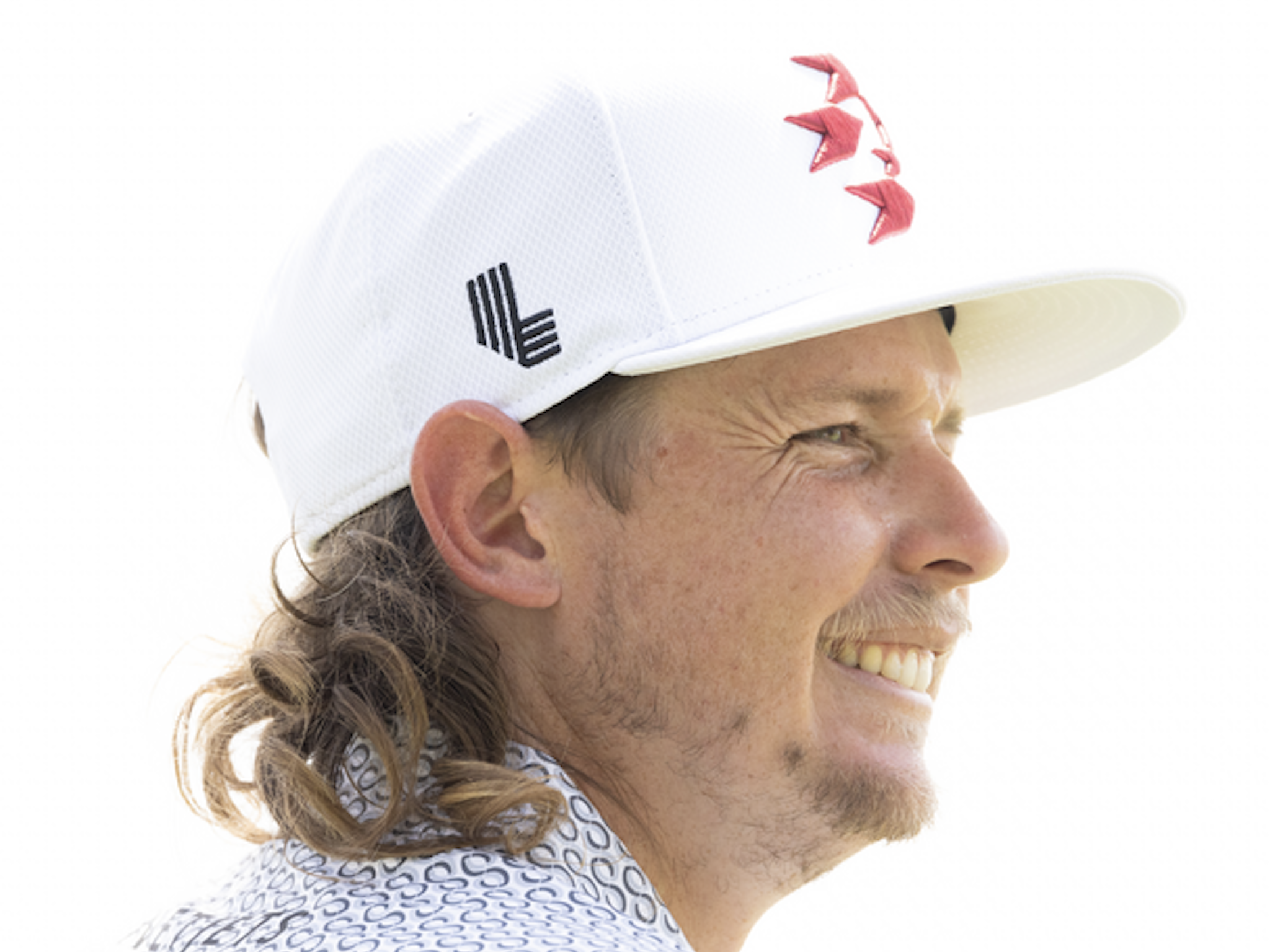
LIV Golf is set to begin its fourth event of the season at Hong Kong Golf Club in Hong Kong, China. This marks the first time that LIV Golf will travel to China for an event.
Hong Kong Golf Club is a par 70 measuring 6,710 yards. LIV will be using the “Fanling Course” for the event.
While speaking with Asian Tour player Travis Smyth, he gave me a rundown on what it takes to be successful at Hong Kong Golf Club.
“Hong Kong golf club, it’s pretty old school, like super short and tight. And I, I don’t think it falls into like a bomber’s hand. I think you’ll see a lot of guys hitting it to roughly the same spots on the majority of the holes. There’s a few holes where Bryson will be able to unleash a few but not many. When I played here, I hit Hybrid on Par 4’s off the tee maybe like seven times.”
Travis also said that the tight fairways and penal potential misses will keep the bombers at bay.
“It’s just that sort of course you’re hitting it like anywhere from 220 to 240 off the tee. And then from there you have a range of holes where it’s like kind of some sort of wedge or nine. It’s not very long.”
Around the green game will also be tremendously important at Hong Kong Golf Club.
“The greens are small as well and it’s usually quite hard to get up and down if you miss the greens. Someone like Cameron Smith I could see doing really well there. He played well in the international series. but just someone that’s, you know, pretty dolled in with their, their scoring clubs, he’s probably going to do well there.”
Players dialed in with their game from tee to green with control over the golf ball should fare extremely well.
“You can’t really scramble from the trees either. So, you really just have to. I’d, yeah, just whoever’s the best ball striker that week, you can’t really strap it around and fake it around there. You got to hit it straight. The tree lines are dead, there’s some hazards and stuff. It’s a short, tight quirky course, not what any of these guys are probably used to.”
Despite it being short, don’t be surprised if it gives players some real trouble.
“It should be fun viewing because there’ll be a lot of opportunities. They’ll feel like they can go low around there because it’s short but, you know, you make a few bogeys, and you get quite frustrated, and you start pushing off the tee and find some trouble and stuff. It can eat you up as well.”
Smyth finished 2nd at Hong Kong Golf Club to qualify for the 2023 Open Championship at Royal Liverpool.
Past Winners at Hong Kong Golf Club
- 2023: Ben Campbell (-19)
- 2022: Wade Ormsby (-17)
- 2018: Aaron Rai (-17)
- 2017: Wade Ormsby (-11)
- 2016: Sam Brazel (-13)
- 2015: Justin Rose (-19)
- 2014: Scott Hend (-13)
- 2013: Miguel Angel Jiminez (-12)
The top of the board once again will be a major threat this week. Jon Rahm is still in search of his first win on LIV and has been knocking at the door in each of his first three starts. Brooks Koepka hasn’t yet contended but is playing steady golf and has yet to shoot a round outside of the 60’s this season. Joaquin Niemann is the hottest player on the planet and has shown no signs of slowing down.
However, on a golf course that can neutralize the big hitters, this is an event that seems a bit more up for grabs than we’ve seen in the first three LIV events.
LIV Golf Stats YTD
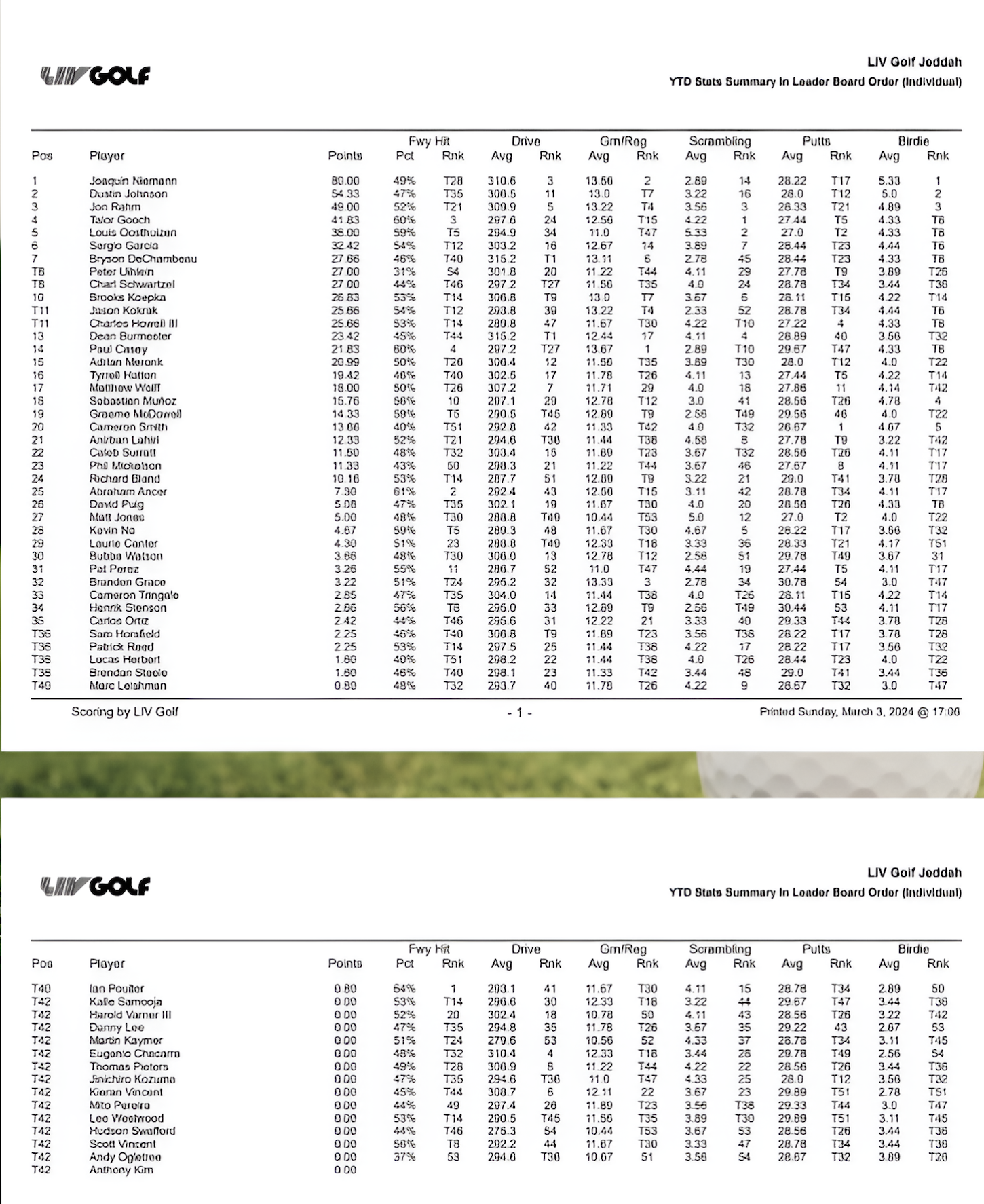
2024 LIV Hong Kong Picks
Cameron Smith +2000 (Bet365, BetRivers)
It’s been a slow start for Cam Smith this season. In his three starts on LIV, he’s finished T8, T15, T41 and has yet to look like the Cam that is one of the best players in the world. Hong Kong Golf Club should be the perfect course fit to get the former Open Champion out of his slump.
Hong Kong Golf Club is tight off the tee, and many players won’t be able to hit driver. That will neutralize some of the best drivers of the golf ball in the field and propel players like Cam, who are almost unbeatable from fairway to green. Cam’s driver has been a weakness throughout his career, and it’s been especially pronounced this season. He’s tied for 51st in fairways hit thus far on the season. Taking driver out of his hand this week could be exactly what he needs to get on track.
Despite the poor tee balls, Smith still ranks 1st in putting and 5th in birdies made. He’s also a great scrambler, and with small greens at the course, having to get up and down is inevitable. If he can play from the fairway this week, he should have a major advantage in the other facets of the game.
Louis Oosthuizen +2000 (DraftKings)
Louis Oosthuizen should be an absolutely perfect fit for Hong Kong Golf Club. The South African has been remarkably consistent over the past few months dating back to the fall, where he won two consecutive DP World Tour events and also finished 2nd at the International Series Oman. In his three LIV starts this year, Louis has finished T8 at LIV Mayakoba, 50th at LIV Las Vegas and T2 at LIV Jeddah.
Louis is relatively short off the tee and that won’t hurt him this week. He is one of the best putters and scrambler on LIV, and his silky-smooth swing looks as dialed in as ever at the moment. He’s yet to win a LIV event, but a victory for Louis seems imminent.
Patrick Reed +5000 (FanDuel)
Patrick Reed is another play who’s yet to win a LIV event but has been a winner throughout his entire career. The former Masters champion should love Hong Kong Golf Club as it will play to his strengths on and around the greens.
Reed played on the Asian Tour this fall and finished T15 at the Hong Kong Open and T7 at the Indonesian Masters. The experience in Asia this season should be a benefit for Reed acclimating to the travel and conditions this week.
The 34-year-old should benefit from taking driver out of his hand and similar to Smith, can beat anyone in the world if the tournament become a short game competition.
*Featured Image and Stats Image courtesy of LIV Golf*
- LIKE12
- LEGIT8
- WOW4
- LOL0
- IDHT0
- FLOP1
- OB1
- SHANK7
-
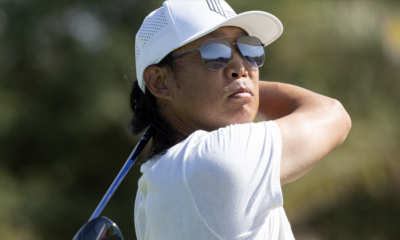
 19th Hole3 weeks ago
19th Hole3 weeks agoTour pro calls Anthony Kim a ‘f*****g idiot’ following Instagram comeback post
-
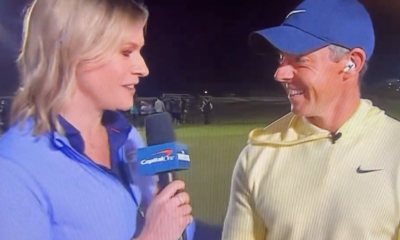
 19th Hole3 weeks ago
19th Hole3 weeks agoThis Rory McIlroy post-round ‘The Match’ moment is going viral…but all is likely not what it seems
-

 Whats in the Bag3 weeks ago
Whats in the Bag3 weeks agoAnthony Kim WITB 2024 (February)
-
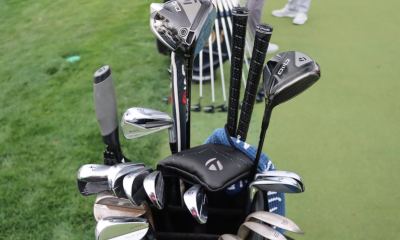
 Whats in the Bag2 weeks ago
Whats in the Bag2 weeks agoScottie Scheffler WITB 2024 (March)
-
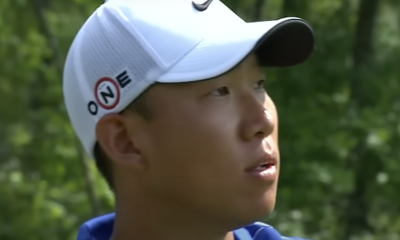
 19th Hole3 weeks ago
19th Hole3 weeks agoAnthony Kim’s speculated LIV Golf sign-on fee may surprise you
-
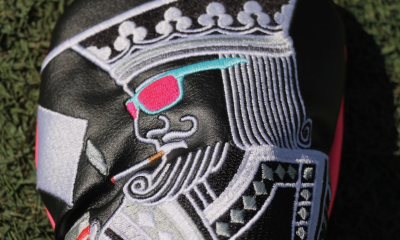
 Tour Photo Galleries2 weeks ago
Tour Photo Galleries2 weeks agoPhotos from the 2024 Arnold Palmer Invitational
-
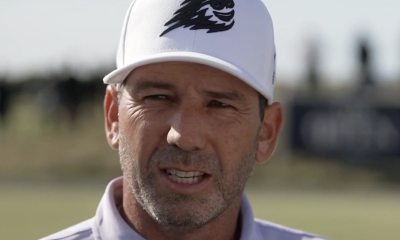
 19th Hole2 weeks ago
19th Hole2 weeks agoThe total sum that Sergio Garcia needs to pay in fines if he wants to return to DP World Tour revealed
-
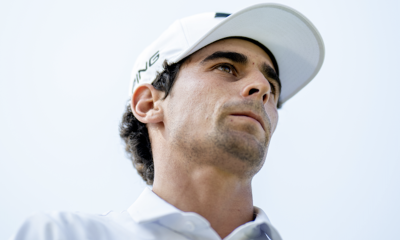
 19th Hole2 weeks ago
19th Hole2 weeks agoJoaquin Niemann names 3 PGA Tour events he’d love to play each year ‘in a perfect world’


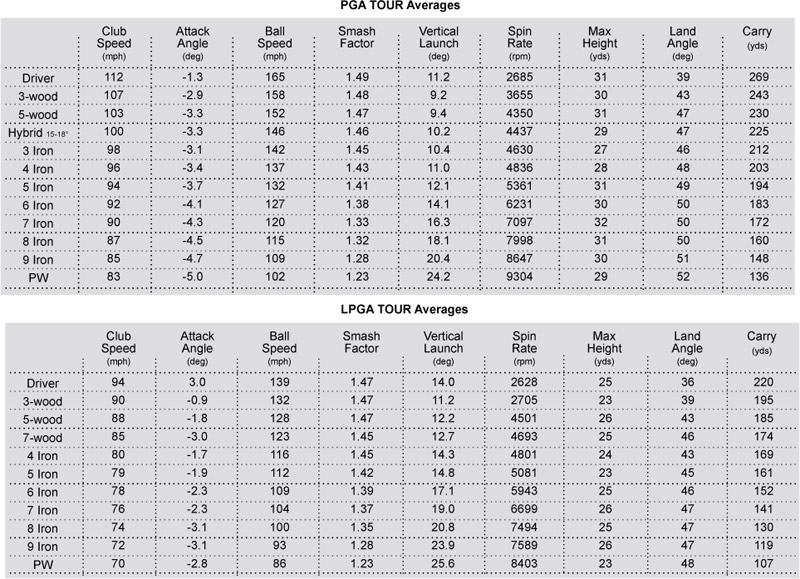
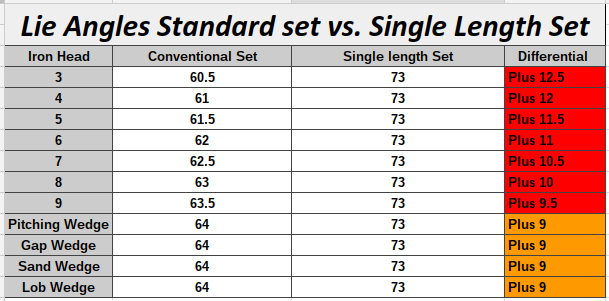
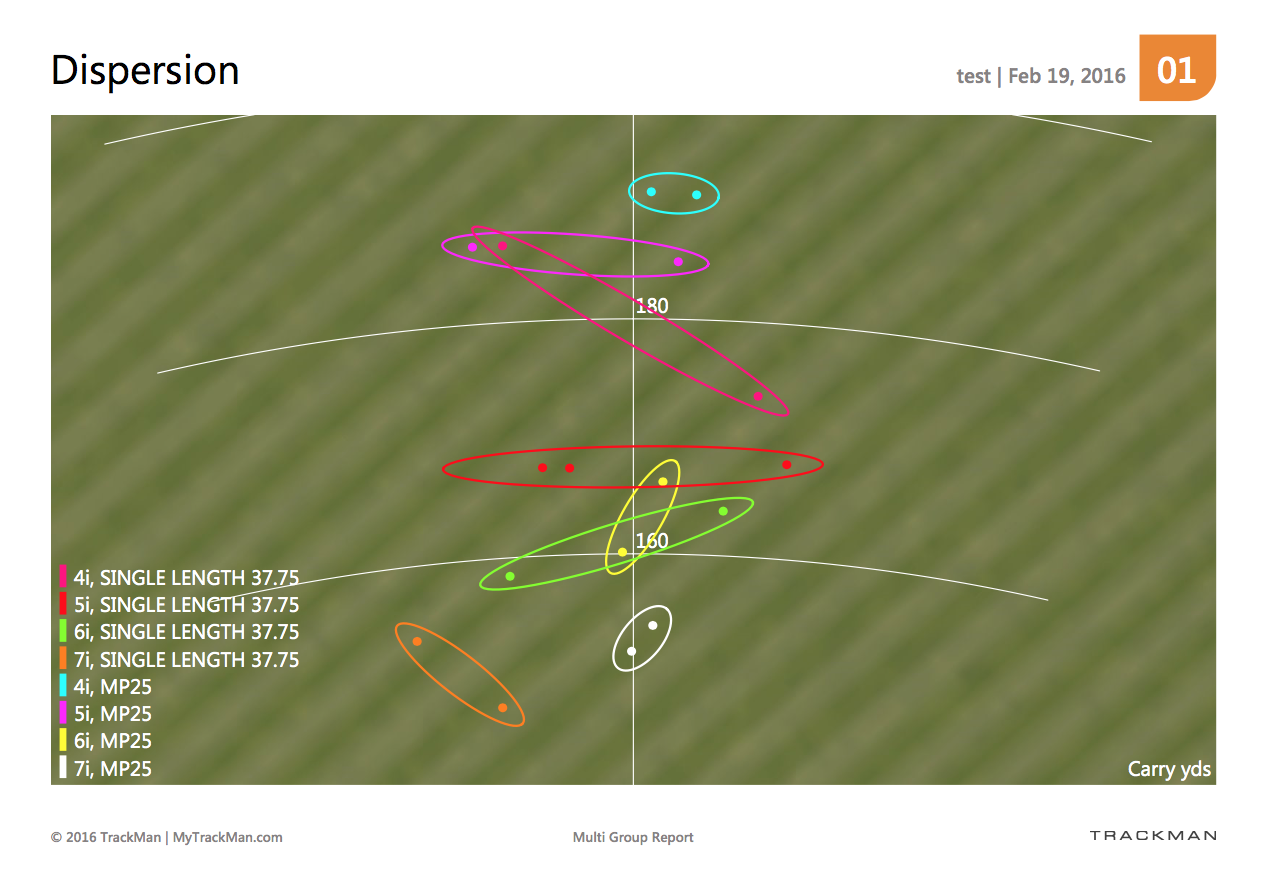



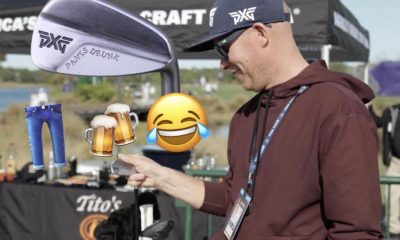

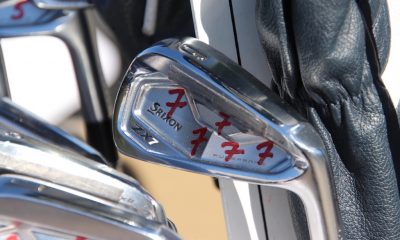





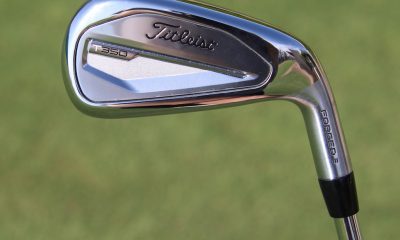

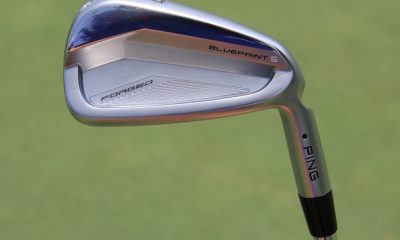

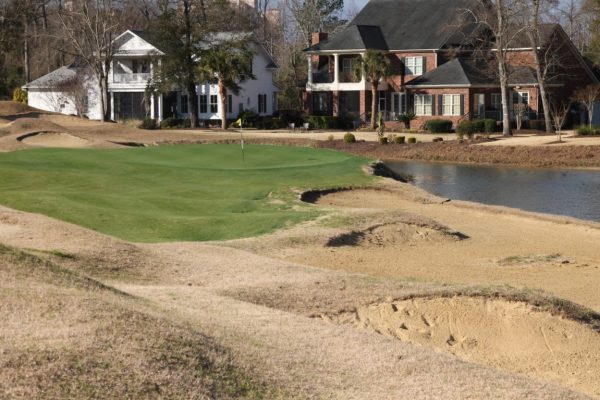
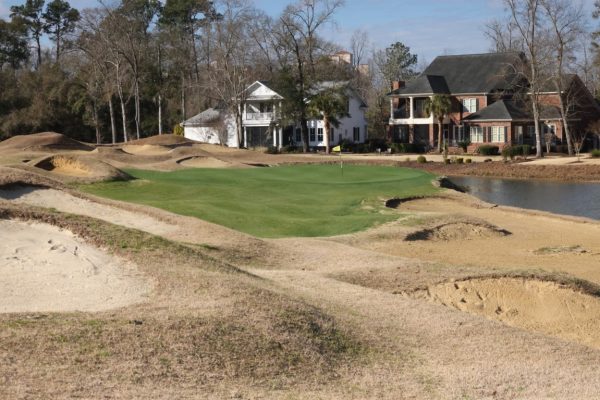
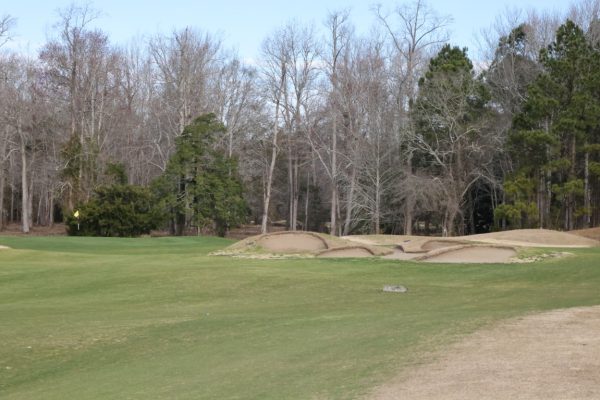
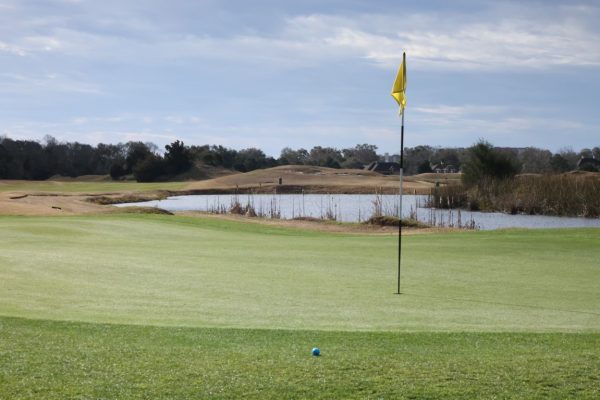
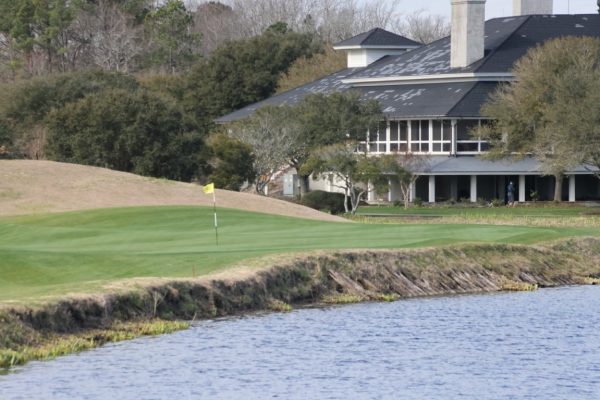
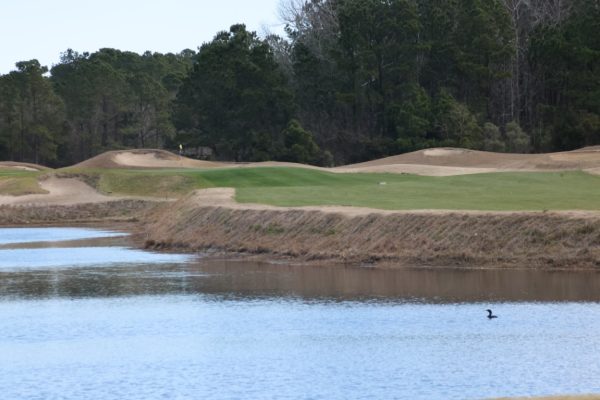
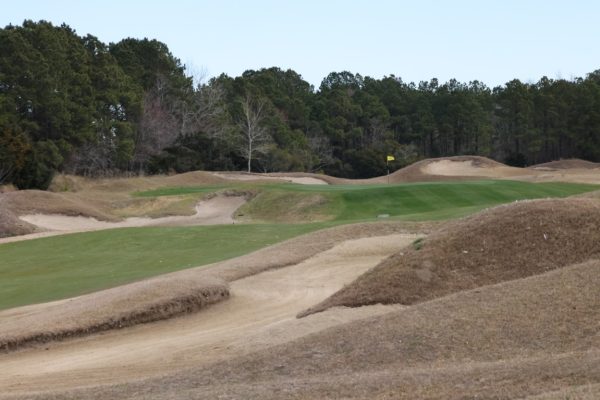
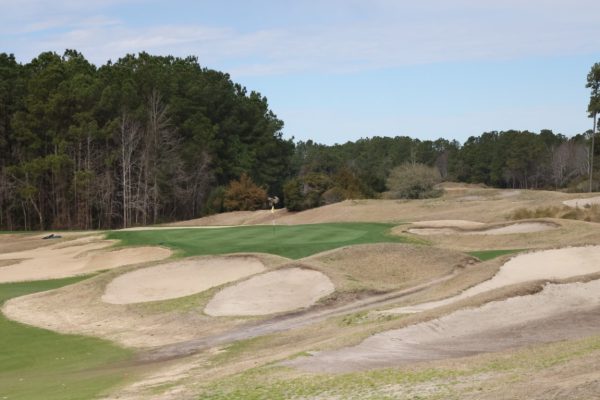
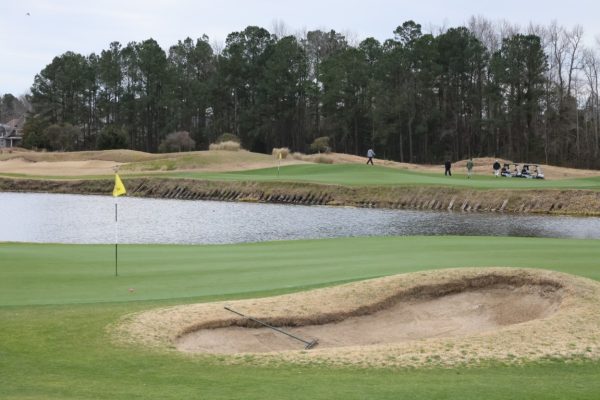

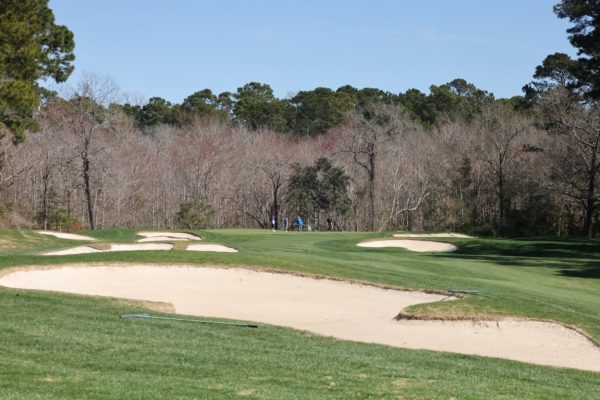
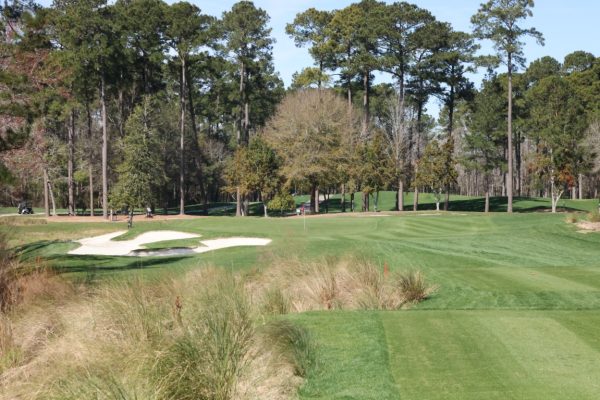
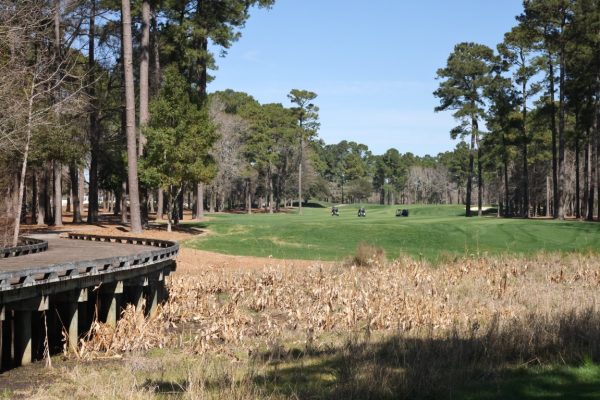


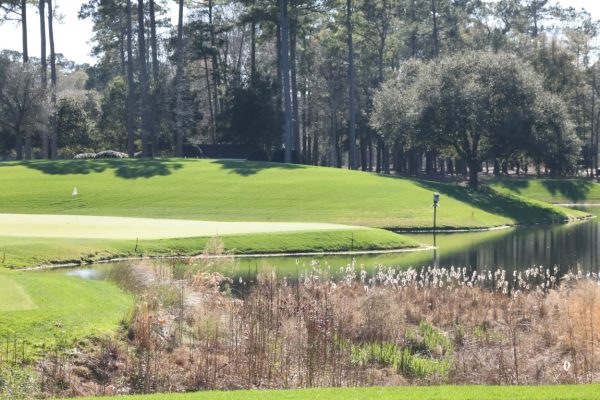
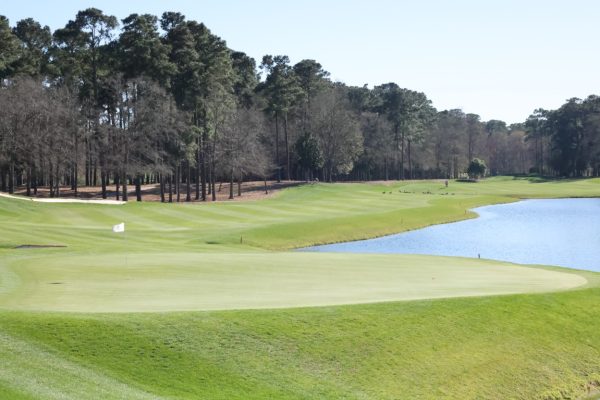
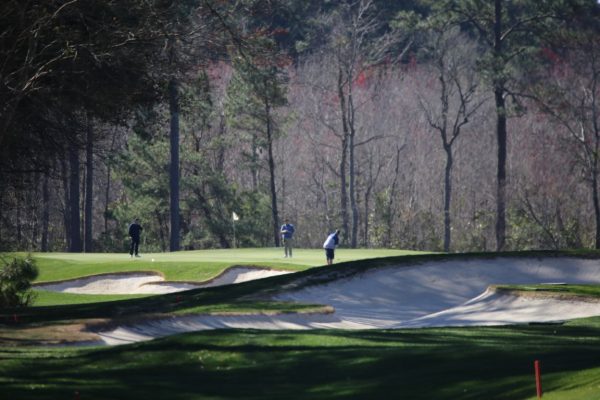


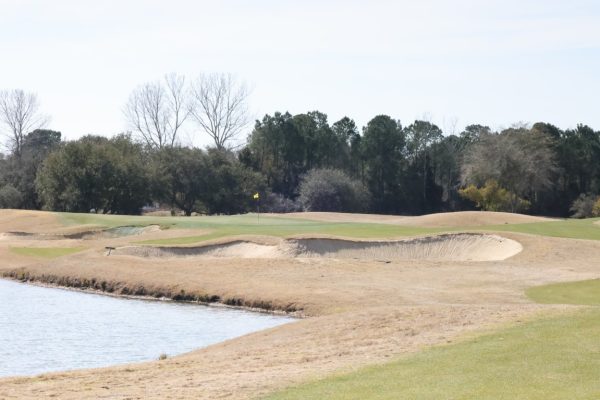

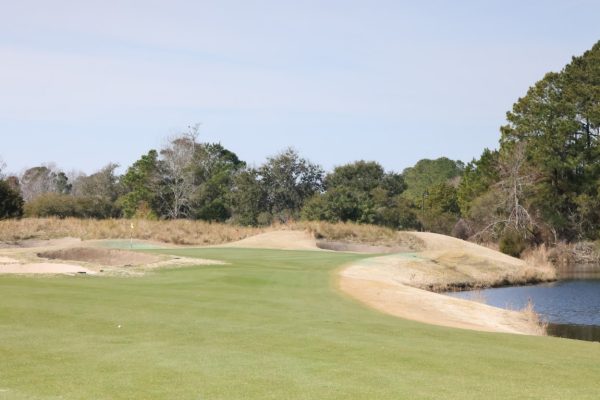
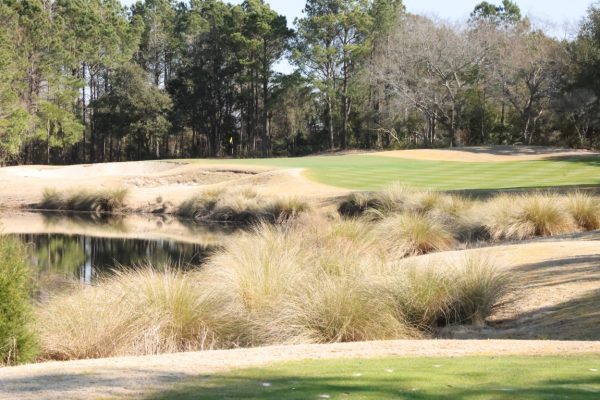
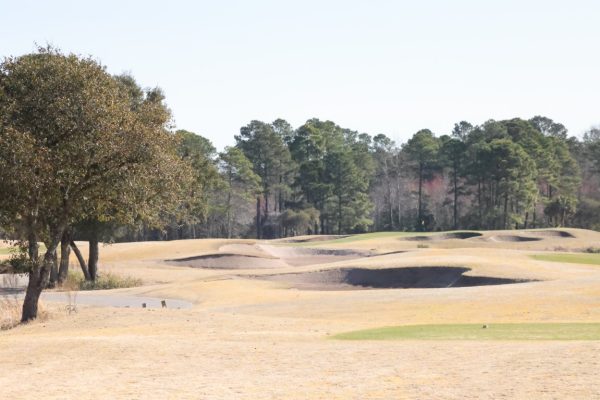





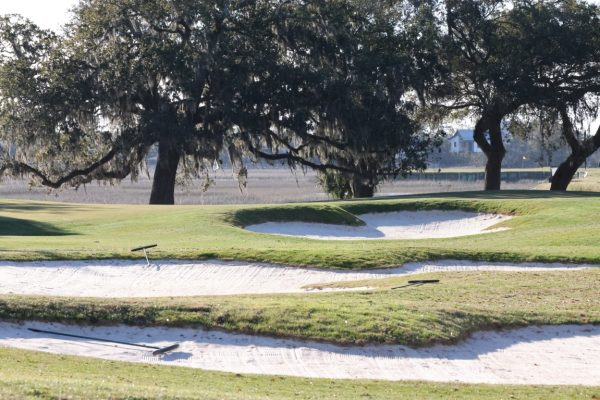
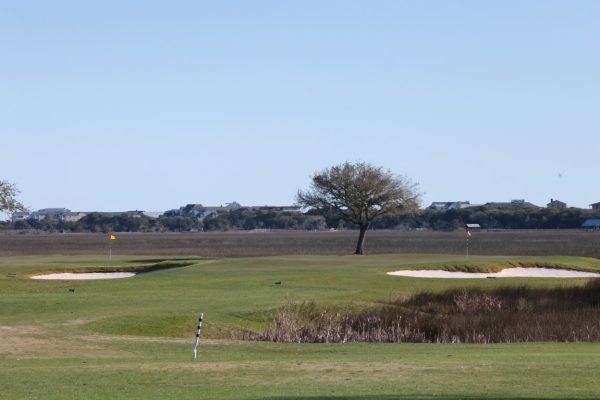

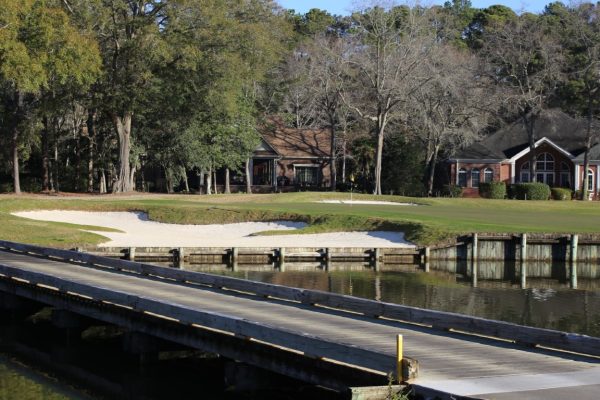
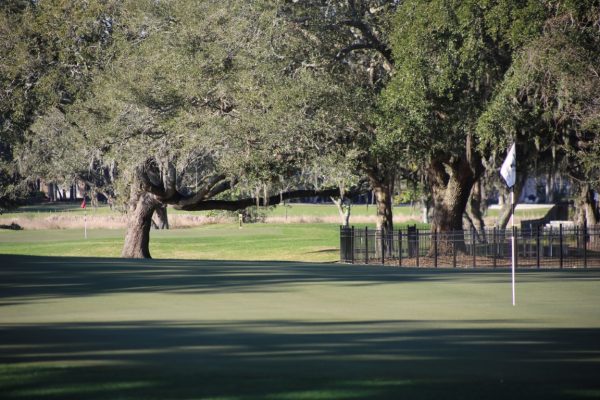
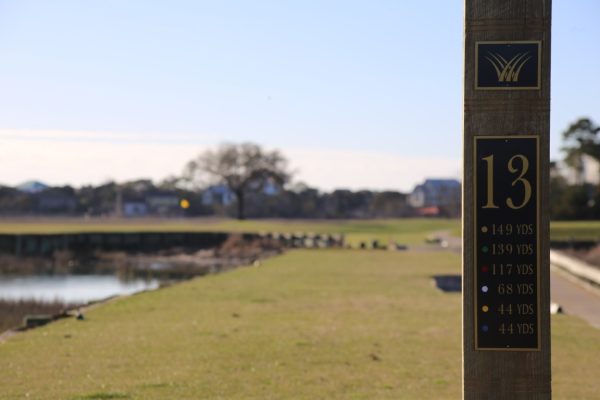
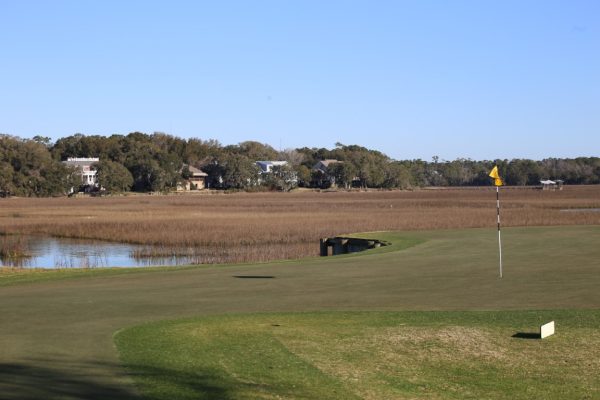
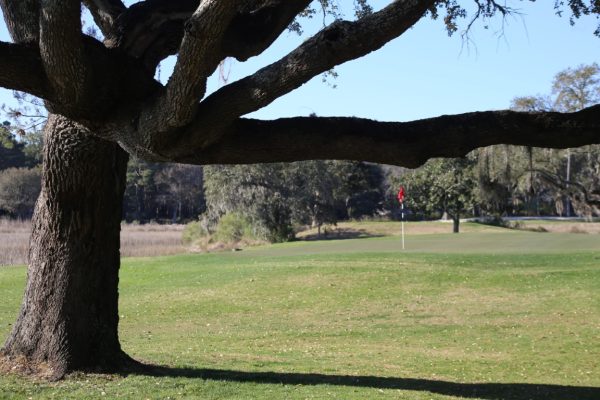
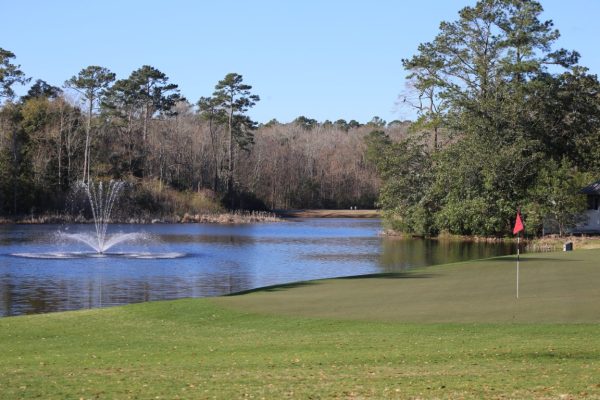
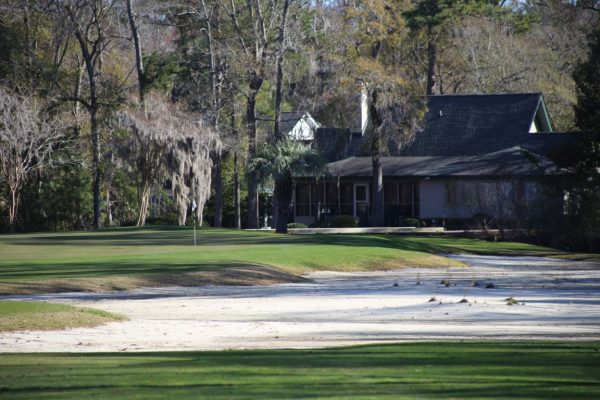






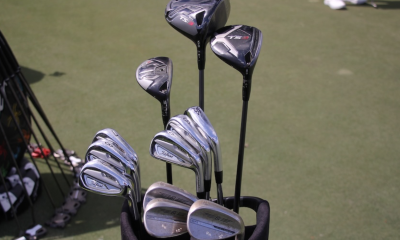

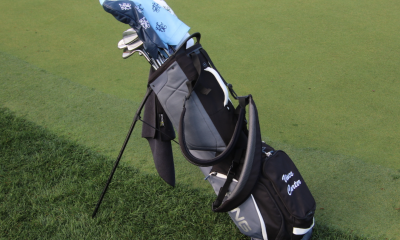

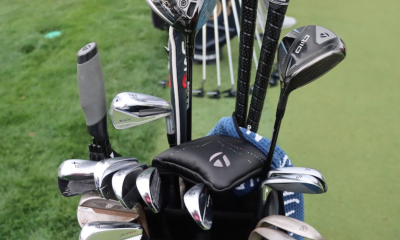

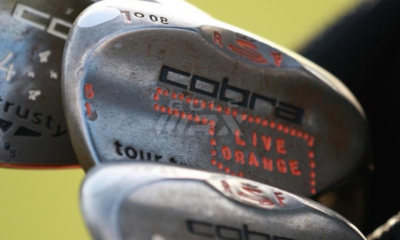

Bruce Gerhold
Mar 18, 2016 at 1:58 pm
I used conventional club heads and fabricated a set of MOI matched clubs using a 2 length concept. This could be an alternate set that a player would find useful: I have played these for several months no plans to return to variable length, variable weight clubs.
I hold advanced degrees in Mechanical Engineering where I studied the science and mathematics of moving bodies. My career was in R&D work so tinkering with club fabrication is a natural. I’ll outline my fabrication below.
The clubheads are a cavity back design with and undercut behind the face ( Hireko Prophet CB cast perimeter with a forged, hardened stainless face Note the lofts are 1 club number lower than conventional to artificially add length but I refer to conventional loft club numbers below. http://www.hirekogolf.com/golf-components/clubheads/golf-irons/dynacraft-prophet-cb-iron-clubhead.html ). I selected these based on excellent feel of the forged face inserts and the undercut offers a convenient place to add weight that is well supported mechanically and will remain on the club head. The 2, 3, 4, 5 irons are same length, same shaft, same shaft trim (5 iron), same grip. I used two techniques to add weight to the club heads so they all equaled the 5 iron ( 263 g) : first, I mixed tungsten powder and shafting epoxy forming a self leveling mix, then put the mix in the cavity allowing it to settle to the bottom of the undercut and distribute evenly. When greater than 10 grams is required, I used 1/4 oz “egg” shaped lead fishing sinkers that were flattened to fit into the undercut – one in the toe and one in the heel. I then used the tungsten powder + epoxy to trim the weight and pot in the lead pieces. Both methods function well with no weight lost while playing and practicing. The long irons are 37 inches long.
The 6, 7, 8, 9 are made similarly with weight equal to the 8 iron ( 284 g ), shaft trim of an 8 iron and no weight on the 9 iron (simply made it 3/8 shorter for constant total club MOI). The short irons are 36 inches long. Since the short irons are shorter, but with increased head weight, the club MOI equals that of the long irons as measured with a pendulum technique. Note: the MOI is the moment of inertial of the entire club about the point between the hands (pivot point for club release which is what generates speed). The concept of swingweight is not supported by science and I (and many others) take as meaningless.
I find that even though I have 2 club lengths, the ball position is roughly the same for the 2 lengths with the longer clubs played one ball forward of the short clubs.. The common set up tremendously simplifies your game and leads to solid iron play. I flattened lie angle somewhat on the 5,4 and 8,9 but hesitated to bend too much because they are a cast body (2 degree max bending recommended). My 2 length clubs play just fine with minimal lie adjustments because the 2 lengths effectively give a lie adjustment.
My results show NO SHOT DISTANCE PROBLEMS. The length of a shot depends on club loft, club momentum (speed times MASS), and hitting the sweet spot. The added club head mass compensates for the shorter shaft, and I hit much more solid shots due to a controllable club length. 9 iron 120 and 2 iron 195 with normal type spacing for the intermediate clubs.
Lawrence Savage
Mar 18, 2016 at 1:01 pm
I bought a set of 1 Iron clubs because I thought it sounded like a really good idea. These were the problems I experienced:
1. The look on some clubs (3i, 4i and particularly wedges) was a bit off putting
2. I hit shorter shots in general, even though the lofts were nearly identical to my previous set. This was an absolute confidence killer. My swing speed is very middle of the road and I found that 3i and 4i were barely longer than 5i
3. I found the shafts in the wedges a little bit whippy, which may have contributed to reduced distance
4. The larger grips took a bit of getting used to, and I went from hitting a relatively predictable draw to an semi-controlled fade
5. Chipping was much harder from Kikuyu grass because of the low bounce of 3° (except SW at 6°) – certainly it was awkward-feeling chipping with a 7i-length LW at first
6. The grooves absolutely mashed the golf balls covers. In fact if one were super particular it would be one shot one ball, so much was the scuffing. This was a real sore point since the ZAR:USD exchange rate has made decent balls very expensive now
7. I went out six shots on handicap over five months – this was the death knell for me
I eventually went back to my old set and after a year I recovered my old form, in fact I reached my lowest hcp. It was a really expensive experiment, but super glad I tried it. Maybe when I’m older I would consider them again.
Ash
Mar 18, 2016 at 12:52 pm
The article ‘borrows’ heavily from members comments in the forums. A key point left out is that Bryson D, with Edel Golf, have adjusted heads so that the weights are IDENTICAL. Missing that vital point renders this article worthless.
Gisle Solhaug
Mar 17, 2016 at 10:25 am
The advantage of single length sets of irons is that your muscle memory will only have to learn one swing for your set of irons rather than one swing for each club. The same can be achieved on a standard set of golf clubs by optimizing the weight of each club by adding a specific weight to the grip end of the club. As the ball position and club length differ on a traditional set, so must the weight of each club. The calculations to obtain this exact weight is complex and involves building a computer model of your body swinging each of your clubs. You will then have the same swing for every club in your bag, except the putter of course. By making every club the same length, the ball position will be the same for every club at setup. Therefore, the clubs will be perfectly matched when they all have the same weight and MOI. And they will all have the same Swingweight, for those of you that care about that. The disadvantage of a single length set of irons is that you still need to apply a different swing for all the other clubs in the bag. What if you could have the same swing for all the clubs? That would make the game a lot easier. Those who are interested can learn more at http://www.rational-golf.com
Large chris
Mar 18, 2016 at 1:47 pm
Not according to the book ‘physics of golf’ by Jorgenson as referred to by Dave Tutelman.
Perfectly balancing a conventional 1/2 inch progression set of irons requires specific weights added both at the butt and midway down the shaft. It can’t be done by just adding different weights at the butt only, as it is not possible to equalise the first, second and third moments of the club without adding weights at the midpoint.
Also you seem to be suggesting you can achieve the same swing with different length clubs…. Patently impossible as the lie angle is changing ie the angle your wrists are pointing at to ground out the club.
KK
Mar 16, 2016 at 7:56 pm
Very interesting but I do agree this this probably for the higher swing speed golfer. Maybe two lengths for slower swing speeds? That would be a nightmare for fitters, lol.
Tony Wright
Mar 16, 2016 at 6:59 pm
Thanks for the informative article Ryan. You mentioned Tom Wishon’s single length iron design. I know that he worked for 2 years to develop it, in partnership with a very good European player. It will be very interesting to see what happens with his design once it gets into the hands of golfers through custom club fitters. I know that he has already sold out 4 orders of single length iron heads through his supplier – the first shipment of heads from Tom to custom fitters will happen sometime later in March, and the 4th set of orders will not occur until sometime in June. None of this says that single length is going to catch on – and Tom himself says it will not be for everyone – but we will see!
Snowman9000
Mar 16, 2016 at 1:25 pm
Regarding your dispersion graphic: At least one of those club numbers should have been effectively the same in both sets. Maybe the 5 iron, maybe the 6. Yet every SL club was worse. Are you comparing an ill-fitted SL set to a well-fitted conventional set?
BTW I don’t disagree with your assessment of the obstacles involved. I have custom made 3 SL sets. Even going so far as to remove or add weight in the right places as to improve the flighting of the irons. My last set was my best, and it’s pretty good. But I still find that the “short” irons (9 & wedges) fly too high. I feel it’s because the attack is shallower. My irons are only 6 iron through wedges, so the rest of the objections don’t really come into play. I can see a 5 iron, but I can’t see any reason today for a recreational golfer to play a 4 iron, no matter the length. So for 5 or 6 irons through wedges, it’s not that hard to do, and there are definite benefits in consistency, once the right fitting is found.
With an SL set, you don’t have to fret about whether to match the clubs via swingweight, or MOI, or MBI, or balance point, etc. Which is good, because some golfers do better with descending swingweights, some with steady swingweights, some with ascending weight shafts, some with constant weight shafts, some with unitized (descending weight) shafts, etc. But the amount of testing, and of required discernment ability by the fitter and golfer, and randomness of swings during fitting, make it extremely unlikely that the golfer comes out of the fitting with the true right heft and balance for him, throughout the set. MAYBE for the test club, yes. Hopefully so.
In the SL set, all that goes out the window. If the test club is truly a good fit, so are the others.
Again, I admit that this has to be balanced against the downsides, which are distance gapping and flighting. Many golfers, if they played an SL set that truly matched their swing, might find better results even despite the gapping and flighting issues. Might.
Jason
Mar 16, 2016 at 12:55 pm
Golfers are funny. Every top 100 player in the world uses a standard set of clubs and some guy shows up out of nowhere (albeit BC is a great golfer and he obviously has had tremendous success) with a single length set and now everyone is considering changing years of familiarity for them. The lifelong equipment search for golfers continues…
Robert A Parolisi
Mar 15, 2016 at 7:37 pm
Add tape to build up the taper in the shaft, then grip down on the iron.
Al
Mar 15, 2016 at 3:18 pm
I’ve tried to do this with 2011 Tmag tour preferred MC (they have exchangeable weights and ebay allowed for a variety of options), I went with a lighter shaft Nippon 950gh HT. Basically, I had the 8-LW the same length. The 3,5 and 7 same length, didn’t use the 4 and 6 for gapping purposes. Had the 3 bent to 20, the 5i to 25 and 7i to 30. I added a heavier weight plate to the back as well as brass shaft tip weights. I was able to get them to C9-D2. Overall it was fine, I actually had some solid rounds and scored well too. Mentally I struggled looking down at the 3 and how short it was. I played the 8-LW at a length of 35.5″ and 3-7″ at 36.5″. Unfortunately I reverted back to normal lengths. I regret it now and wish I would have stayed with it longer. I have another set of shafts I can play with if I get the itch.
Scooter McGavin
Mar 15, 2016 at 12:56 pm
Sounds like something you’d need to go to a specialty shop for, because I doubt the local Golfsmith or Golf Galaxy would have the equipment or know-how to accommodate.
Bob
Mar 15, 2016 at 11:23 am
I’ve known Ryan for many years and he knows the mechanical aspects of club building as well as anyone I’ve met in my 37 years in and around the golf business. He an excellent synopsis of the positive and negative aspects of the single length approach, IF in the hands of an athletic player like Dechambeau.
TOM
Mar 15, 2016 at 10:49 am
the last paragraph sums it all up.
Ryan
Mar 15, 2016 at 10:46 am
I’m not quite ready to switch to a single length set of irons, but what do you think about a single length for wedges? It’s something I’ve been considering for awhile.
devilsadvocate
Mar 15, 2016 at 2:54 pm
Single length wedges are the norm on tour… Highly recommend not only single length wedges but single swing weight , total weight, and lie angle throughout your wedges… Only difference would be loft (obviously) and bounce… Then when you practice short game you develop a consistent bottom of the arc with your wedges… Kind of important haha
Aaron
Mar 15, 2016 at 3:33 pm
I have played my wedges (46,50, 55, 60) at the same length (off the pw) for years. The consistency is definitely easier to have when they all setup the same. It will feel only a tad odd at first on your lob wedge when you are gripping it normal and you will gain some extra yardage in that club as well, but I have found it to be easier to control them because the setup and feel is the same throughout. I don’t know that I would go to a single length set though… The idea of increasing length shafts allows you to have an increased swing speed as you go towards the long irons without the addition of actually swinging harder. The other thing that comes into play is “working the ball”. The flatter lie angle on the lower lofted clubs makes it easier to create draws and fades. I tend to change my swing quite a bit to suit the shot shape I am attempting and I don’t play the robotic swing style like Bryson. If you are someone who views golf in straight shots and the same swing as much as possible in a round I think the single length set could be advantageous.